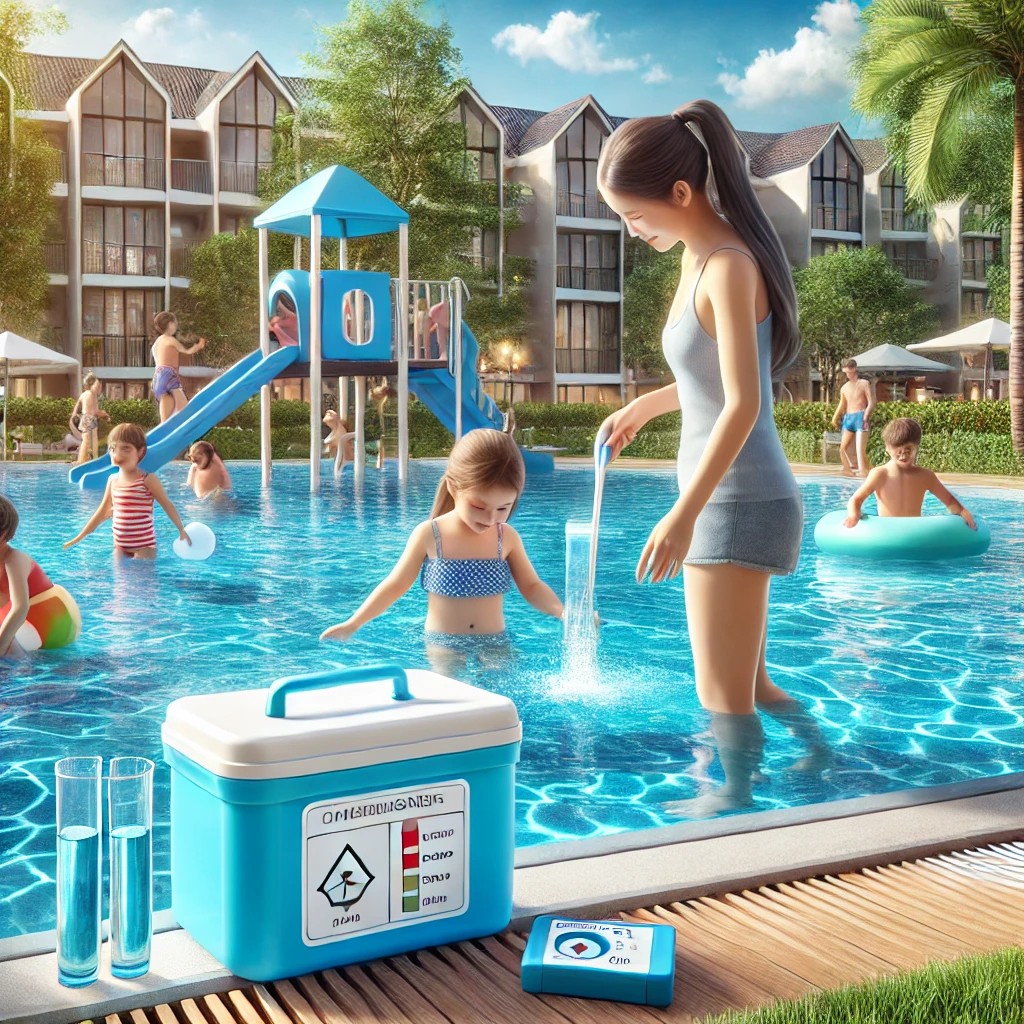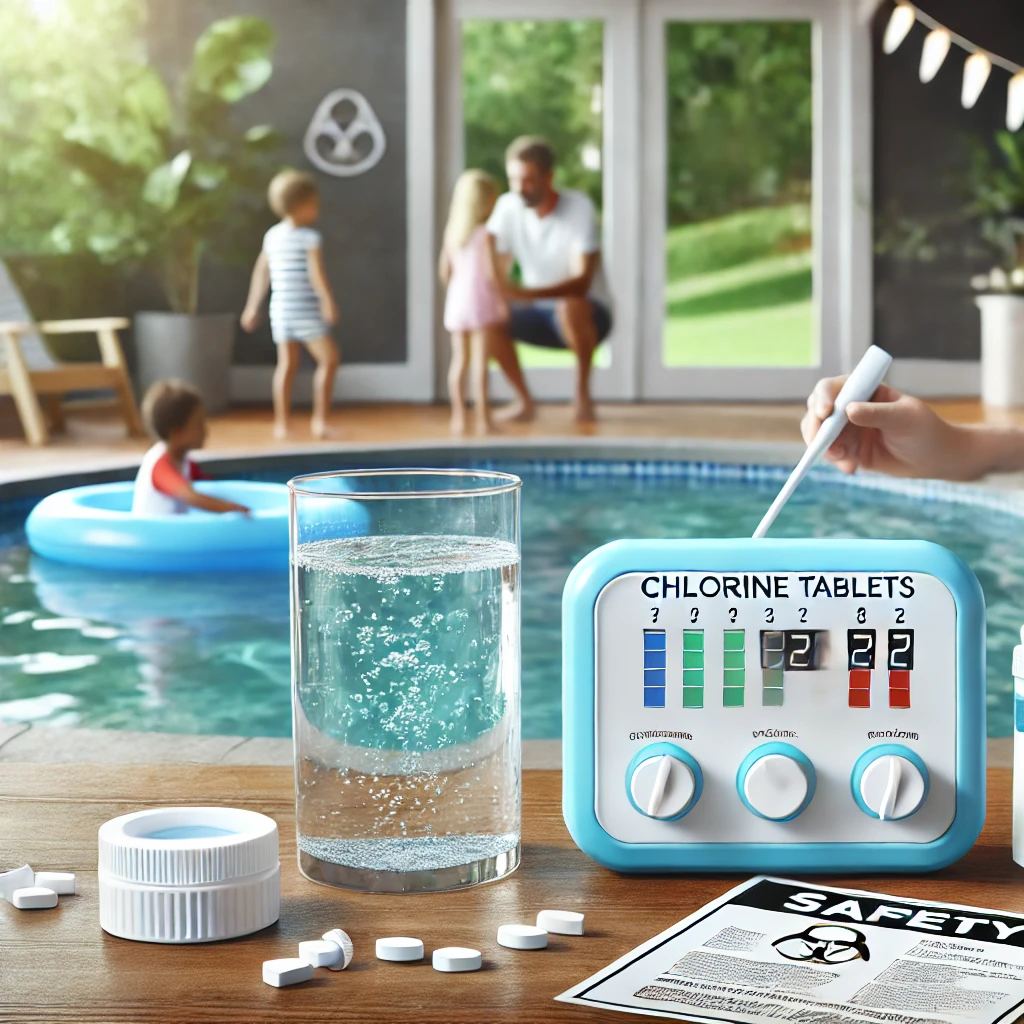Swimming is a fun activity for children. However, ensuring their safety in the pool is crucial. Chlorine tablets play an essential role in maintaining pool water hygiene. They kill harmful microorganisms and prevent waterborne diseases. But how do these chlorine tablets work? And, more importantly, how can we use them safely in children’s pools?

I. How Chlorine Tablets Work
Chlorine tablets dissolve in pool water and release chlorine. This chlorine reacts with the water to form hypochlorous acid. Hypochlorous acid is a powerful disinfectant. It destroys bacteria, viruses, and other harmful pathogens. By doing so, chlorine tablets protect children from infections. The best chlorine tablets dissolve gradually, providing consistent protection.
Chlorine is essential for water hygiene, but too much chlorine can be harmful. Therefore, managing the right amount of chlorine is critical. This is especially true in children’s pools where water volume is smaller. Children are more vulnerable to the effects of high chlorine levels. So, it’s essential to balance chlorine use with safety precautions.
II. Health Impacts of Chlorine on Children
Chlorine tablets effectively control pool bacteria. However, excessive chlorine can irritate children’s skin and eyes. The strong chemical can also affect their lungs, leading to respiratory problems. The delicate skin of children makes them more susceptible to these irritations. Over time, frequent exposure to improperly managed chlorine levels can harm their health.
Therefore, it’s crucial to use only the highest-quality chlorine tablets, which dissolve evenly and maintain optimal chlorine levels over time. Paired with a reliable testing kit, these tablets allow pool owners to consistently monitor and adjust chlorine levels, preventing overexposure and ensuring the water remains safe for children and environmentally friendly.
III. The Importance of Testing Pool Water Regularly
Regular water testing is crucial in pools that use chlorine tablets. Over-chlorination can harm children, but under-chlorination allows harmful bacteria to thrive. Both situations can compromise the safety of the pool. Pool owners should test the chlorine levels at least twice a day. This ensures that the best chlorine tablets are dissolving correctly.

Regularly testing the water not only monitors chlorine levels but also helps detect other chemical imbalances, such as pH levels, which are crucial for chlorine’s effectiveness. If the water is too acidic or too alkaline, chlorine’s disinfecting power is significantly reduced. By maintaining proper pH levels, chlorine can function efficiently, ensuring the pool remains clean, safe, and hygienic for use.
IV. Chlorine Tablet Safety Tips for Children’s Pools
To safely use chlorine tablets in children’s pools, consider the following tips:
1. Always use best chlorine tablets
These tablets dissolve slowly and evenly. They help maintain a consistent level of chlorine.
2. Monitor chlorine levels regularly
Test the water at least twice daily. This helps avoid over-chlorination or under-chlorination.
3. Use a floating chlorine dispenser
This device distributes chlorine evenly across the pool.
4. Store chlorine tablets safely
Keep them in a cool, dry place, away from children’s reach.
5. Rinse children after swimming
After swimming, rinse children with fresh water. This helps remove any chlorine residue from their skin.
V. Environmental Impact of Chlorine Use
While chlorine is necessary for microbial control, its environmental impact cannot be ignored. Excess chlorine can enter nearby water systems, affecting aquatic life. Therefore, it is crucial to handle chlorine tablets responsibly. By using only the required amount, we can prevent environmental damage while ensuring children’s safety.
The best chlorine tablets are designed to minimize environmental impact by dissolving slowly, reducing the need for frequent application. This careful chlorine management helps pool owners ensure water safety for children while also promoting sustainability and reducing harmful effects on the environment.
VI. Conclusion
In summary, chlorine tablets are vital for maintaining clean, safe water in children’s pools. They effectively kill harmful bacteria, ensuring children’s health is protected. However, using chlorine tablets requires careful management. Over-chlorination can lead to health issues, while under-chlorination allows harmful bacteria to survive.
By choosing the best chlorine tablets and monitoring water regularly, we can strike the right balance. In this way, children can enjoy swimming without health risks. Safe pool management goes beyond using chlorine—it requires regular testing, environmental care, and awareness of children’s unique sensitivities.



